Table of Contents
Introduction
The 7 wonders of the world are iconic landmarks celebrated for their history, beauty and human achievement. In 2007 a global vote named the “New” 7 Wonders: the Great Wall of China, Petra (Jordan), Christ the Redeemer (Brazil), Machu Picchu (Peru), Chichén Itzá (Mexico), the Roman Colosseum (Italy), and the Taj Mahal (India). Each site is a UNESCO World Heritage treasure and offers a unique adventure. From the misty mountain citadel of Machu Picchu to the ivory-white symmetry of the Taj Mahal, these destinations ignite the imagination. In this guide we’ll explore each wonder with vivid description, cultural significance, and practical travel tips for the perfect visit.
Great Wall of China
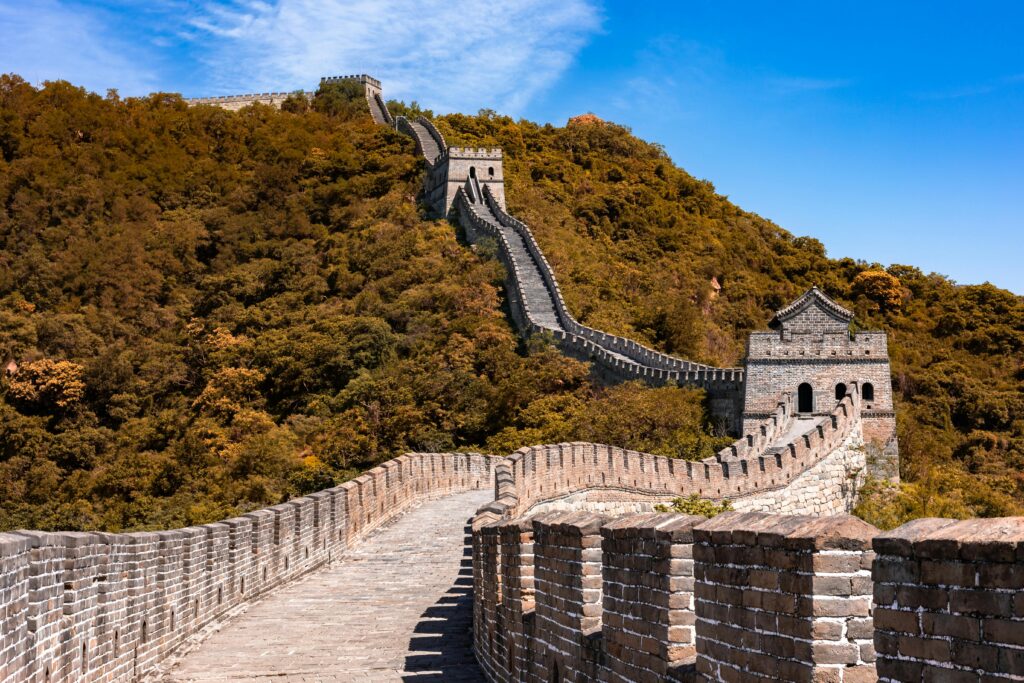
Winding across misty mountain ridges and arid desert plains, the Great Wall of China is a monumental symbol of the nation’s strength, perseverance, and engineering brilliance. While sections of the wall date back as early as the 3rd century BC, its most iconic stretches were built during the Ming Dynasty (1368–1644) to protect China from northern invasions. Altogether, the wall extends over 21,000 kilometers, making it one of the longest human-made structures on Earth.
This legendary structure meanders through the Chinese countryside, offering breathtaking views and a deep sense of history. Myths once claimed it was visible from space, but the true grandeur of the wall is best appreciated up close – whether you’re hiking rugged stone steps, exploring watchtowers, or admiring the rolling landscapes that stretch beyond the horizon.
Travel Tips:
- Best Time to Visit: Spring (April–May) and autumn (September–October) are ideal for clear skies and comfortable temperatures. Autumn also offers vibrant foliage and thinner crowds.
- Top Sections: The most visited parts of the wall are Badaling (easily accessible, popular, and well-preserved) and Mutianyu (less crowded, with lush forest views). Both are reachable from Beijing.
- Ticket Prices: Entry generally ranges from 40–65 CNY (around $6–10 USD) for adults. Children under 1.2 meters often enter free.
- Opening Hours: Most sections are open from 8:00 AM to 5:00 PM, though hours may vary by season or location.
- Additional Options: Some sections offer cable car rides, slideways, and even night tours, so check ahead based on where you plan to go.
- Nearby Attractions: While in Beijing, consider adding stops to the Forbidden City, Summer Palace, or Temple of Heaven for a deeper cultural experience.
Petra, Jordan
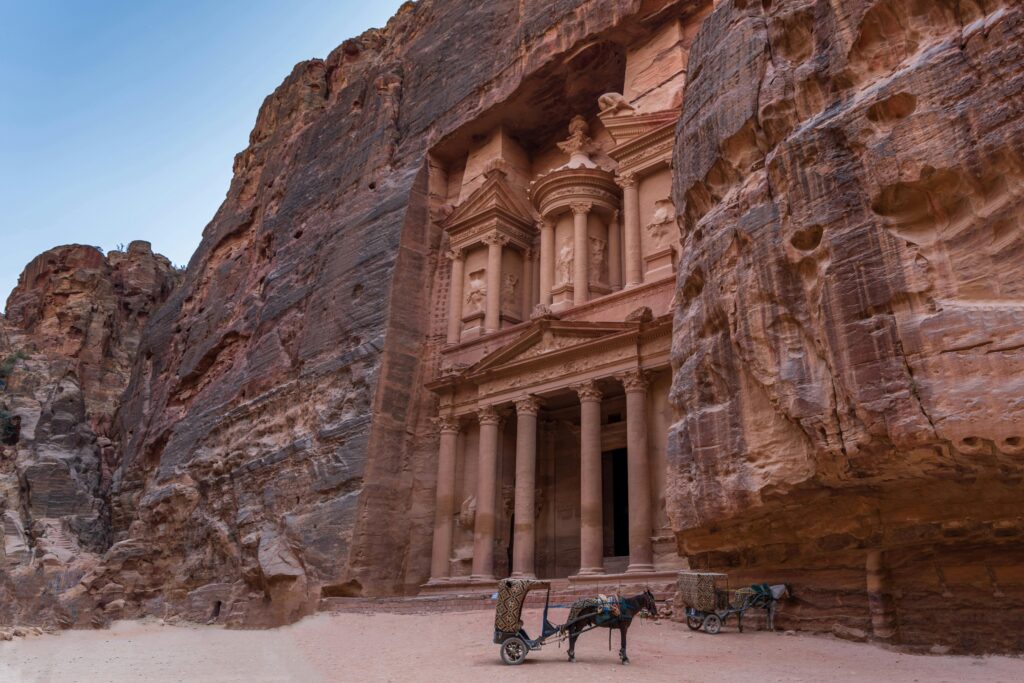
Carved into the fiery red sandstone cliffs of southern Jordan, Petra is a mesmerizing ancient city that truly earns its place among the 7 wonders of the world. Known as the “rose-red city, half as old as time,” Petra was founded by the Nabataeans around the 4th century BC and flourished as a vibrant trading hub between Arabia, Egypt, and the Mediterranean.
Its most iconic structure, the Treasury (Al-Khazneh), stands like a mirage at the end of a narrow gorge known as the Siq – a 1.2 km-long pathway flanked by towering rock walls. This stunning façade, carved directly into the cliff, showcases the Nabataeans’ incredible craftsmanship and blends classical Hellenistic design with Eastern traditions. Beyond the Treasury, Petra reveals a vast archaeological wonderland of rock-cut tombs, temples, and an ancient amphitheater, all nestled within a dramatic canyon landscape.
Lost to much of the world for centuries, Petra was “rediscovered” in 1812 and is now a UNESCO World Heritage Site as well as a must-see for global travelers.
Travel Tips:
- Best Time to Visit: Spring (March to May) and autumn (September to November) offer pleasant weather and cooler temperatures. Summers can be extremely hot, especially midday.
- Entry Fees: A one-day ticket costs around 50 Jordanian Dinars (≈ $70 USD), while two- and three-day passes cost 55–60 JOD.
- Timing Your Visit: Arrive early – around 6:00 AM – to see the Treasury glow in the soft morning light before crowds arrive.
- What to Bring: Comfortable, sturdy shoes are a must – Petra is expansive and the terrain can be uneven. Don’t forget sun protection and plenty of water.
- Nearby Attractions: Add a visit to Wadi Rum, Jordan’s epic desert of sandstone mountains and canyons; float in the Dead Sea for a relaxing contrast; or explore the Roman ruins of Jerash north of Amman.
Christ the Redeemer, Brazil
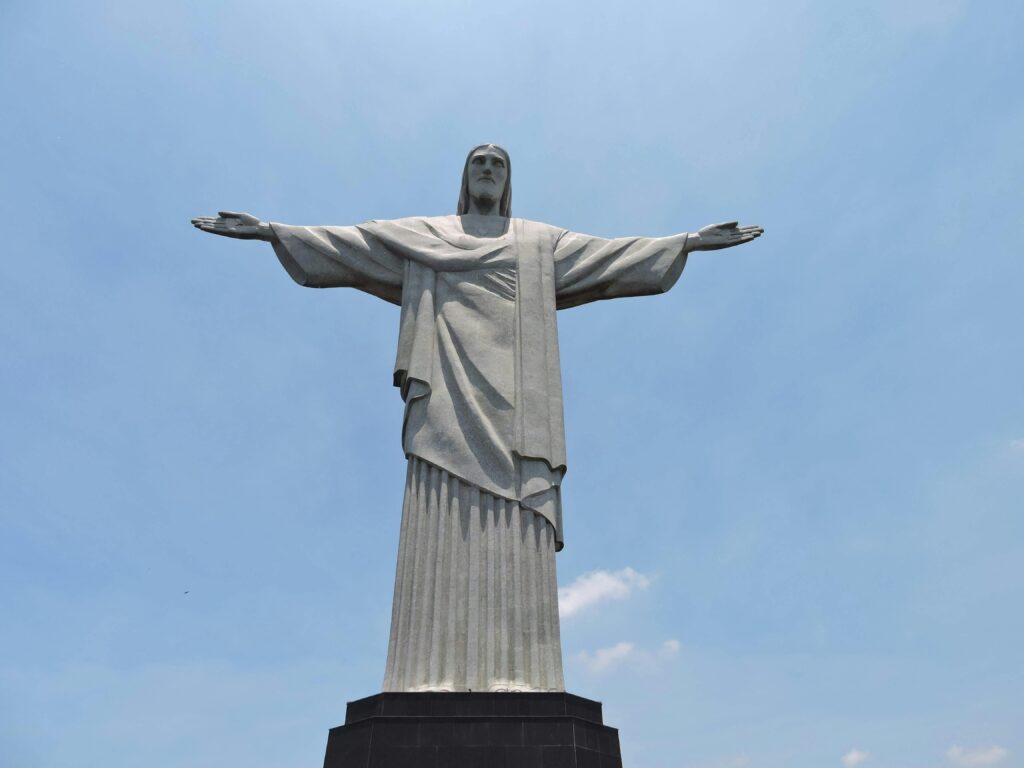
Towering high above Rio de Janeiro on Corcovado Mountain, the majestic statue of Christ the Redeemer is one of the most recognizable landmarks in the world – and rightfully one of the New 7 Wonders of the World. With arms stretched wide in a welcoming embrace, the statue symbolizes peace, unity, and faith, watching over the vibrant city below.
Standing 30 meters tall (or 38 meters including its pedestal) and spanning 28 meters across, this Art Deco masterpiece was constructed between 1922 and 1931. Designed by Brazilian engineer Heitor da Silva Costa and sculpted by French artist Paul Landowski, the statue is made of reinforced concrete and covered in soapstone. Perched at 710 meters above sea level, Christ the Redeemer offers panoramic views of Rio’s stunning mix of mountains, ocean, and cityscape.
The statue is also part of the UNESCO-listed Carioca Landscapes, highlighting its role in shaping the dramatic beauty of Rio’s natural and cultural scenery.
Travel Tips:
- Best Time to Visit: To avoid haze and crowds, go early (before 8:30 AM) or later in the day (after 3:30 PM). Midday often brings cloud cover and long lines.
- Getting There:
- The Corcovado Rack Railway from Cosme Velho is a scenic, hassle-free ride. Round-trip fare is around R$60–100 (≈ $12–20 USD), and includes park entrance.
- Alternatively, take official vans from Copacabana or Largo do Machado for a similar cost.
- Opening Hours: The park is open daily from 8:00 AM to 7:00 PM, though exact hours can vary by season or holiday.
- Viewpoints: On clear days, expect awe-inspiring vistas of Sugarloaf Mountain, Guanabara Bay, and the world-famous Copacabana and Ipanema beaches.
- Nearby Attractions: Explore Rio’s Botanical Gardens, hike in the Tijuca National Forest, or take a cable car up Sugarloaf Mountain for more spectacular views.
Machu Picchu, Peru

Hidden high in the Andes Mountains at an elevation of 2,430 meters, Machu Picchu is a breathtaking masterpiece of Incan engineering and spiritual design – and one of the most awe-inspiring of the 7 wonders of the world. Cloaked in mist and framed by lush, jungle-covered peaks, this “Lost City of the Incas” seems to defy both time and gravity, perched dramatically on a mountain ridge above the Urubamba River.
Believed to have been built in the 15th century, the site’s exact purpose remains a mystery. Was it a royal retreat, a sacred ceremonial center, or a strategic fortress? Whatever its role, its architectural brilliance is undeniable. From the Temple of the Sun to the sacred Intihuatana stone (a ritual “sun clock”), Machu Picchu showcases the Incas’ remarkable ability to harmonize stone with nature.
Although it was abandoned during the Spanish conquest, Machu Picchu remained unknown to the outside world until its rediscovery in 1911. Today, it draws travelers from across the globe eager to explore its magic firsthand.
Travel Tips:
- Best Time to Visit: The dry season (April to October) offers the clearest skies. July and August are peak tourist months, so consider visiting in April–May or September–October for fewer crowds and great weather.
- Tickets & Entry:
- Entry is limited and must be booked in advance for a specific date and time slot.
- Standard adult admission is around $60 USD, with discounts for students and locals.
- If you plan to climb Huayna Picchu or Machu Picchu Mountain, you’ll need a separate permit (about $18 USD extra), also limited in number.
- How to Get There:
- Most visitors travel via Cusco or Ollantaytambo, then take a scenic train to Aguas Calientes followed by a shuttle bus up to the site.
- For adventurers, the legendary Inca Trail offers a multi-day trek to the citadel (permits required and often booked months in advance).
- How Long to Stay: Allow at least 2–3 hours to explore the site, though many stay longer or return for a second visit.
- Nearby Attractions:
- Explore Cusco’s colonial streets and Incan ruins like Sacsayhuamán.
- Discover the Sacred Valley, including Pisac’s terraces, Moray’s circular ruins, and the living Inca town of Ollantaytambo.
Chichén Itzá, Mexico
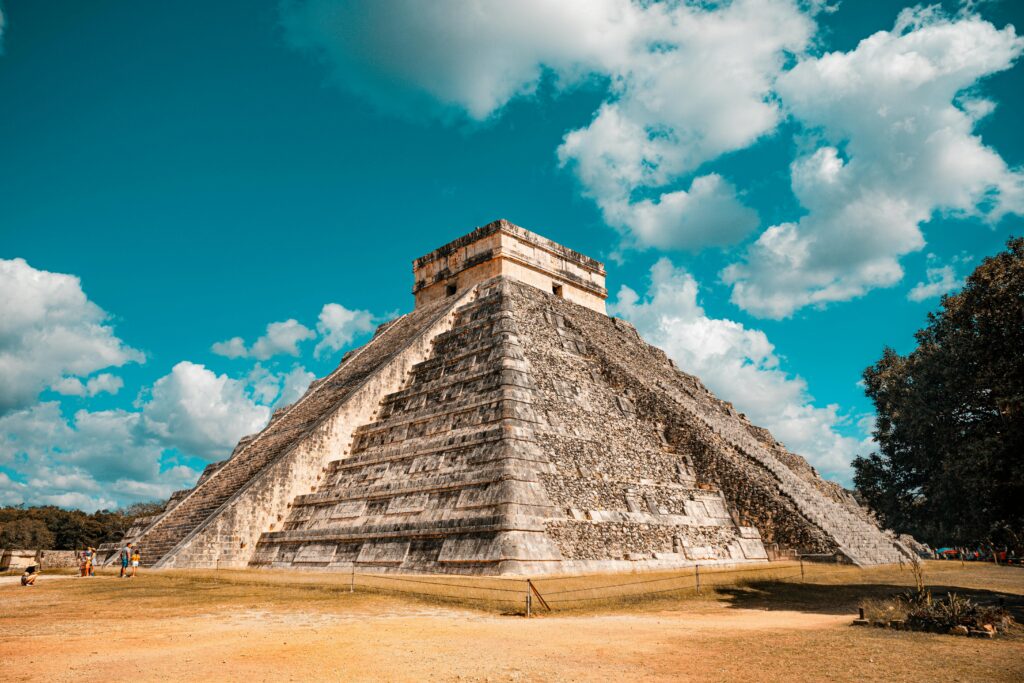
Rising from the heart of the Yucatán jungle, the majestic ruins of Chichén Itzá offer a glimpse into the brilliance of ancient Maya civilization. Once a powerful city and regional capital (9th–12th centuries AD), Chichén Itzá is now one of the most iconic archaeological sites in the Americas—and one of the New 7 Wonders of the World.
The centerpiece of the site is El Castillo, also known as the Temple of Kukulkan. This towering stepped pyramid, standing about 30 meters (100 feet) high, is a marvel of ancient astronomy and design. During the spring and fall equinoxes, a serpent-shaped shadow appears to slither down the staircase—a powerful fusion of science, religion, and spectacle that still draws crowds today.
But Chichén Itzá is much more than one pyramid. Explore the Great Ball Court, the Temple of the Warriors, the Group of a Thousand Columns, and the Sacred Cenote, a deep sinkhole where ritual offerings were made. The site’s precision carvings, astronomical alignments, and monumental architecture are a vivid testament to Maya engineering and cultural sophistication.
Travel Tips:
- Best Time to Visit: Plan your visit during the dry season (November to April), especially in the cooler winter months. Avoid major holidays and equinoxes unless you’re going for the spectacle (expect big crowds).
- Opening Hours: The site opens daily from 8:00 AM to 5:00 PM, with the last entry at 4:00 PM.
- Tickets & Entry:
- General admission for foreign visitors is about 648 MXN (≈ $33 USD).
- Children (ages 3–12) pay significantly less, and Mexican citizens receive discounts (ID required).
- On-Site Tips:
- Arrive right at opening to beat the heat and the tour buses.
- Wear sun protection and bring water—there’s little shade.
- Allow at least 2–3 hours to explore thoroughly.
- Nearby Attractions:
- Cool off with a swim in a nearby cenote, such as Cenote Ik Kil.
- Explore the charming colonial town of Valladolid, just a short drive away.
- Extend your journey to the Tulum ruins on the coast, for Maya history with an ocean view.
Roman Colosseum, Italy
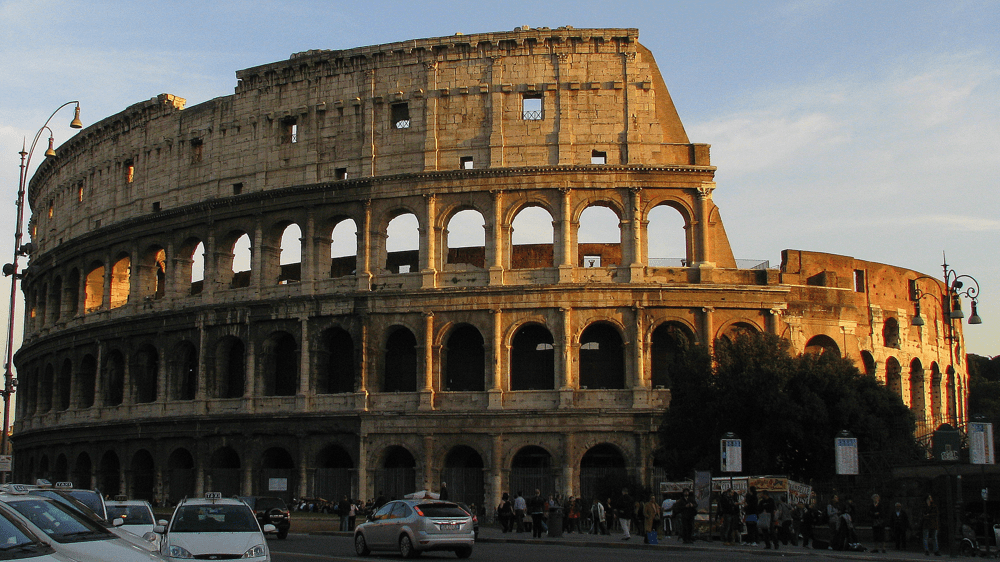
Towering over the heart of Rome, the Colosseum is the most iconic symbol of the ancient Roman Empire—and a true architectural marvel. Built between AD 70–80 under the emperors Vespasian and Titus, this enormous amphitheater once echoed with the roar of 50,000 spectators witnessing gladiator battles, dramatic reenactments, and even mock naval combats.
Crafted from limestone, brick, and concrete, the Colosseum showcases the Romans’ mastery of engineering. Its vast network of vaulted corridors, tiered seating, and the remarkable hypogeum (underground tunnels once used to house animals and fighters) give visitors a deep, tactile sense of history. Walking through its weathered arches is like stepping into a time machine.
Recognized as a UNESCO World Heritage Site and one of the official New 7 Wonders of the World, the Colosseum continues to captivate millions each year. Together with the nearby Roman Forum and Palatine Hill, this area was once the vibrant political and ceremonial center of ancient Rome.
Travel Tips:
- Best Time to Visit: Plan your trip in spring (April–June) or fall (September–October) for pleasant weather and lighter crowds.
- Hours & Entry: The Colosseum opens around 8:30 AM (last entry depends on season). Arrive early morning or late afternoon to avoid peak tourist times.
- Tickets:
- Standard entry is around €18 for adults.
- One ticket covers the Colosseum, Roman Forum, and Palatine Hill, valid for 24 hours.
- Reserve tickets online in advance to skip the long queues.
- On-Site Tips:
- Allocate at least 1.5–2 hours for the Colosseum itself (add time for arena or underground tours).
- The Forum and Palatine Hill across the street deserve another 1–2 hours—wear comfy shoes!
- Nearby Attractions:
- Walk to the Arch of Constantine just outside the Colosseum.
- Stroll through Piazza Venezia to reach the Pantheon, Trevi Fountain, or Capitoline Museums for a full Roman day.
Taj Mahal, India
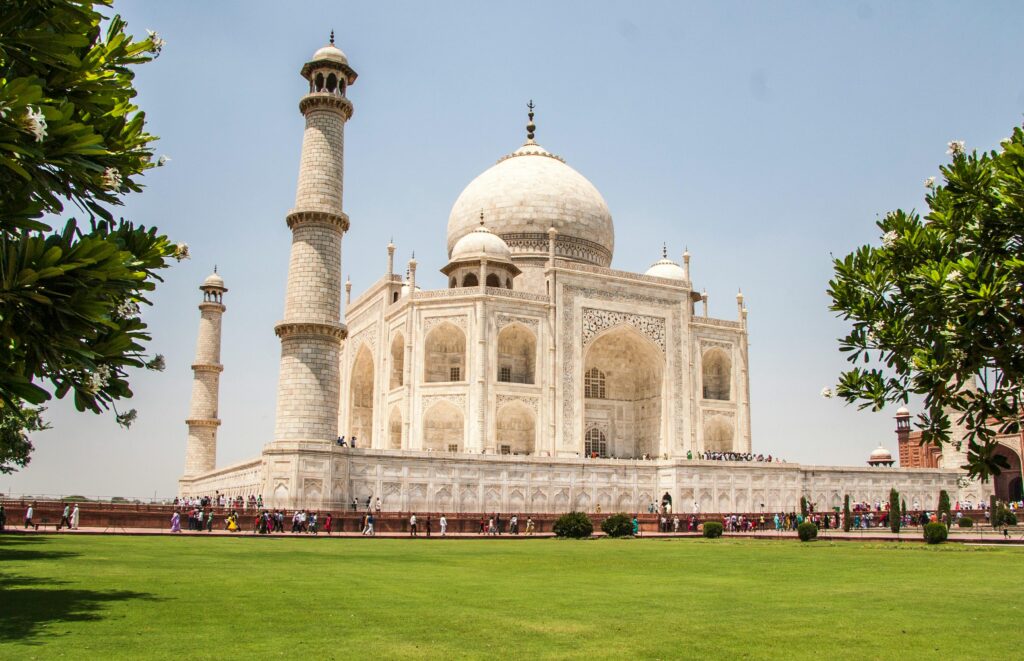
Shimmering under the Indian sun, the Taj Mahal is a timeless ode to love and a jewel of Mughal architecture. Located in Agra on the banks of the Yamuna River, this ethereal white marble mausoleum was built between 1632 and 1648 by Emperor Shah Jahan in memory of his favorite wife, Mumtaz Mahal.
The monument’s symmetrical design, intricate inlay work with semi-precious stones, and the majestic central dome make it a marvel of artistry. At dawn, the Taj blushes pink; at dusk, it glows golden—each moment a new way to fall in love with it. The Persian-inspired Charbagh gardens, reflecting pools, and four slender minarets enhance its poetic symmetry, often earning it the title: “a teardrop on the cheek of time.”
As a UNESCO World Heritage Site and one of the New 7 Wonders of the World, the Taj Mahal welcomes millions who come to admire its serenity, detail, and the deep romance behind its story.
Travel Tips:
- Best Time to Visit:
- October to March offers the most pleasant weather.
- Avoid May–June due to intense heat, and July–September for monsoon rains.
- Hours & Entry:
- Open sunrise to sunset, closed Fridays for prayers.
- Foreign tourist entry: ₹1300 (~$15 USD), with an optional ₹200 for inner chamber access.
- Tickets are time-restricted to 3 hours—book online during peak season!
- Dress Code:
- Modest attire recommended (shoulders and knees covered). Shawls available at the entrance.
- Nearby Attractions:
- Agra Fort (just 2 km away), a grand Mughal fort-palace.
- Mehtab Bagh across the river for a peaceful sunset view of the Taj.
- Fatehpur Sikri, a ghost city of Mughal grandeur, is a worthwhile day trip.
Conclusion: Embark on a Journey Through the 7 Wonders of the World
Visiting these seven extraordinary sites will fill you with awe and inspiration. Each wonder offers a vivid window into the culture and history of its land. From the bustling cities surrounding them to the legends etched in their stones, the New 7 Wonders of the World are bucket-list destinations that reward curiosity and respect. Whether you trek along the Great Wall, wander Petra’s rose-red canyons, admire Christ’s outstretched arms, or stand in the shadow of grand pyramids, these sites remind us of what humans can achieve. Let this guide spark your next adventure – the 7 wonders of the world await your exploration!
Frequently Asked Questions for 7 Wonders of the World
1. Are any of the original Ancient Wonders still standing?
No. Of the original Seven Wonders of the Ancient World, only the Great Pyramid of Giza in Egypt still exists. It’s sometimes listed as an honorary 8th Wonder. The New 7 Wonders list was created to highlight surviving monuments that can still be visited today.
2. Can I visit all 7 Wonders in one trip?
It’s possible, but ambitious! You’d need at least 3–4 weeks, multiple visas, and a global budget. Most travelers explore the Wonders one at a time or regionally (e.g., Machu Picchu and Chichén Itzá in Latin America; the Colosseum and Petra in one Mediterranean journey).
3. Are guided tours worth it?
Absolutely, for historic and cultural depth, a guide or audio guide adds context—especially useful at Petra, Machu Picchu, Chichén Itzá, and the Colosseum.
4. Which wonder is the most budget-friendly?
- Taj Mahal and Christ the Redeemer are among the most affordable.
- Machu Picchu and Petra are more costly due to transportation, permits, and access.
5. Are these Wonders safe for solo travelers or families?
Yes, all are popular, safe destinations with established tourism infrastructure. Just follow local advice, especially for hiking routes (Machu Picchu) or visiting during peak sun (Chichén Itzá).

